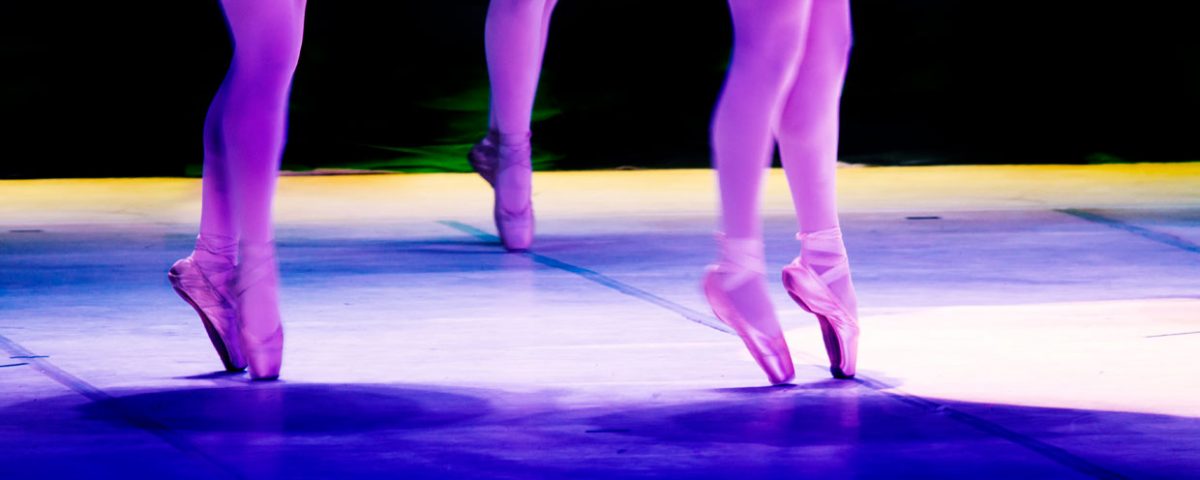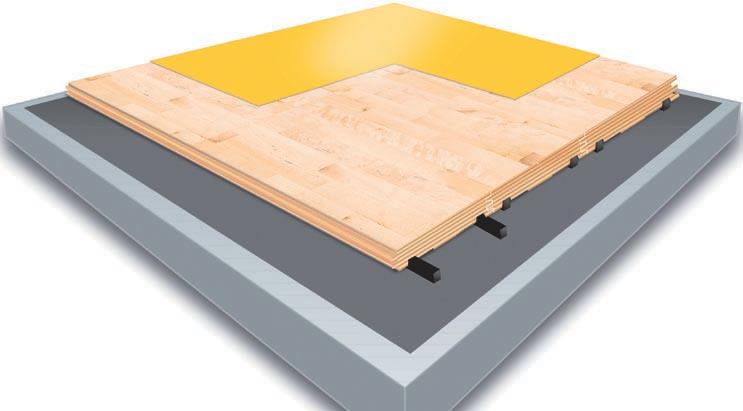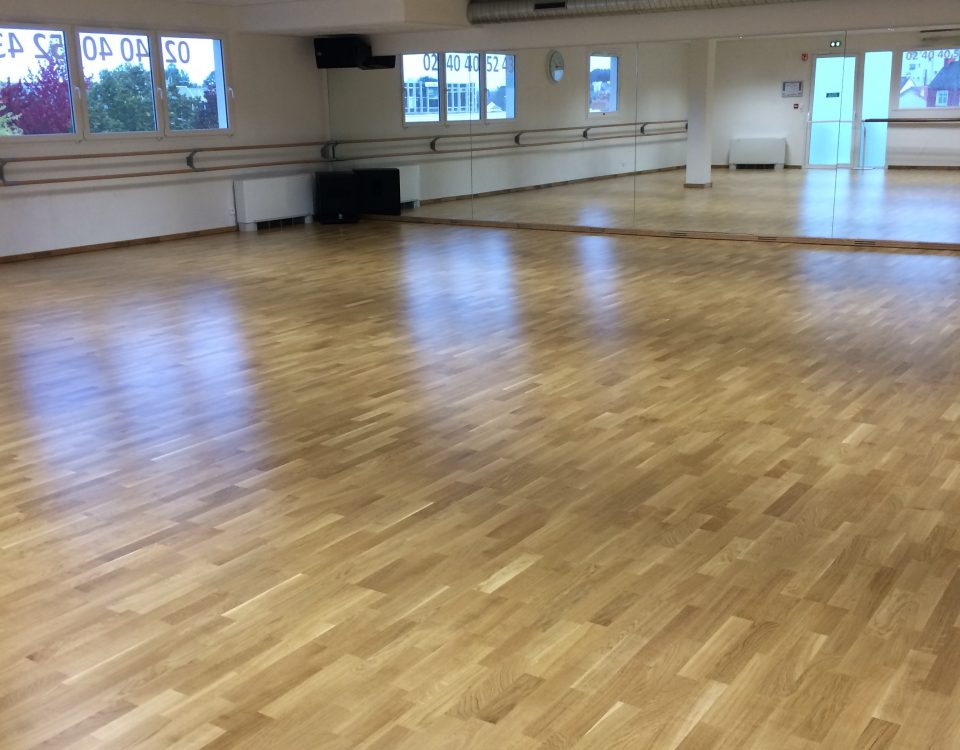
Sprung Dance Floors: The Ultimate Guide
March 28, 2019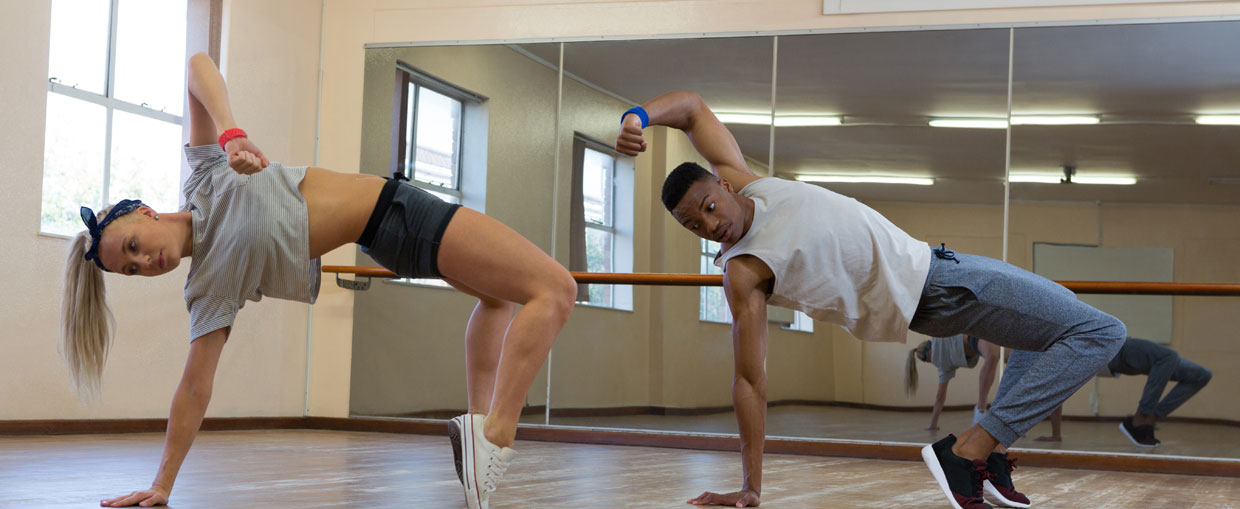
Glassless Mirrors & What You Need To Know About Them
July 9, 2019Thank you for visiting the Dance Equipment International blog. This article is our ultimate guide to Marley dance floors. “Marley” is a generic term for a performance vinyl dance flooring surface that dancers practice, rehearse, and perform on. It is used for dance and theater, schools with sports activity, athletic facilities, yoga studios, physical therapy facilities, churches, stages, private residence, etc… In this guide we cover topics that will help you make informed decisions for your facilities.
One item I want to mention again before we get started… Marley dance floor is a generic term to describe vinyl dance floors. The two words, Marley and vinyl dance flooring, mean the same thing and are used interchangeably in this article and within the dance industry.
If you’d like to see a summary comparison chart of Marley dance floors, click the button below:
Table of Contents:
- History of Marley Dance Floors
- How A Marley Floor Should Be Used
- Choosing The Right Marley Dance Floor
- Installation
- Cleaning and Maintenance
- Storage
History of Marley Dance Floors
As previously mentioned, Marley is a generic term used for roll-out vinyl dance flooring. The name first came about by a business named The Marley Company in England. Marley Company was the first to pioneer and develop a number of vinyl dance floor surfaces.
Most stage dance floors used to be made out of a planked hardwood or a hard linoleum. One of the first developed vinyl floors for dance was a thin reversible dance floor that was black on one side and gray on the other side. It was a vinyl portable floor that professional dancers could travel with and take on tour for different stage performances.
The performers could roll the vinyl dance floor up and down on almost any type of smooth surface at the various locations they performed. Thus, dancers had a performance surface they were used to performing on no matter where they went.
This Marley dance flooring was used on stages, theaters, dance studio, etc… The flooring was a success. However, the delivery time from England to the United States took an extreme amount of time.
In the mid to late 1970, United States companies started developing similar types of vinyl dance flooring. Over the following years, the original Marley Company from England was sold several times and gradually disappeared. However, the term Marley stuck through the years and is still used today to describe any type of roll-out vinyl dance flooring.
How A Marley Floor Should Be Used
Is it better to dance on a sprung wood floor surface or Marley roll-out vinyl dance flooring surface? The answer is both. Through our years of experience, we have found the correct answer is based on the preference and experience of the person using the dance floor as well as and what style of performance will be performed.
Remember Marley roll-out vinyl dance flooring is a performance surface only. Proper use is to use it on top of a wood sprung floor. The proper wood sprung floor is what helps to prevent injuries.
Marley vinyl dance flooring is not recommended to go on top of carpet, rubber flooring or cement. Remember, Marley is a dance surface only, putting vinyl dance flooring surface directly on a cement floor, will still feel like you are performing on cement and injuries are more likely to happen. Carpet is not recommended at all, it makes the surface to cushioned and flexible for performing on.
Choosing The Right Marley Dance Floor
Marley dance flooring provides a surface that is safe, controlled, and durable. It can be used in many different venues such as dance studios, schools with sports activity, athletic facilities, yoga studios, physical therapy facilities, churches, private residence etc. Choosing the right Marley dance floor depends on a number of factors. These factors include:
- What style of dance will be performed,
- The needs of the venue, and
- What is the space usage?
What Style of Dance Will Be Performed
Vinyl dance flooring surfaces can vary from smooth finish to stipple or matte finish. The surface description (Smooth, stipple, etc.) refers to the amount of friction the flooring has. That is how “fast” or “slow” it is.

For instance ballet dancers may prefer a vinyl surfaces that are softer, slower, and more slip resident. This helps them to avoid falls and is also sound absorbing. Tap, Jazz, barefoot or fast action performances might prefer a faster floor. Meaning they can move across the surface quicker with a sharper sound quality.
Performance of vinyl surfaces will also vary depending on what type of shoes will be worn. This varies from hard soles, suede soles, tap shoes, or barefoot. The feel and sound quality is different for each and will depend on weight and type of vinyl surface. That is why it is important to know how the vinyl dance flooring will be used.
Below is a Marley floor comparison sheet that will provide you with the information pertaining to what kind of Marley or vinyl dance flooring surface can be used for different styles of dance. Also provided is information that specifies which floors should be permanently installed vs those that can be semi-permanent.
The Needs Of The Venue
Marley dance flooring has different thickness, weight, sizes, width and lengths.
For example, some vinyl dance floors are considered light weight and are more economical. Being more economical does not mean they are of lesser quality. Instead, it means that they are generally cheaper because they are lighter in weight.
Lighter weight Marley surfaces are sometimes preferred because of their portability for touring. Portability is important especially if you want to roll up it to travel with you to different venues or competitions. You may also have a multi-use facility. In this case being able to easily roll up and move the Marley floor is important.
Marley dance floors that are medium to heavier weight are considered “studio weight performance vinyl flooring.” This type of flooring is generally used in situations where the flooring will not be rolled-up and down frequently. Medium to heavier weight Marley dance floors can be rolled-up and stored or transported, it is just heavier and a lot harder to do so.
Heavier weight Marley dance floors are also preferred for general stage and theater use. The heavier vinyl flooring generally holds up to street shoes, light equipment, cameras, and the heavier traffic of stage use in general relative to the lighter weight Marleys.
A good example of a facility that needs semi-permanent Marley floors would be schools. Dance and drill teams may prefer wood floors or Marley vinyl surface rolled out for the specific routine requirement being performed. Having the choice to dance on a finished wood sprung floor is a nice option under the vinyl flooring because when the vinyl dance floor is rolled up the floor underneath can be used for other venues, making the space multi-use. If the Marley vinyl dance floor is never going to be moved, then a sprung sub-flooring with no hard wood finish can be used.
What Is The Space Usage & What Type Of Facility Is It?
As mentioned earlier, the ideal use of Marley dance floors is to lay it on top of a wood sprung floor. As we mentioned in our Wood Sprung Floor Guide, the proper flooring will help prevent injuries and provide the best performance.
Sometimes wood sprung floors may be out of your budget. Perhaps instead your facility already has a cement slab floor, tile floor or a non-sprung wood floor. You may have to make the decision to keep the existing floor.
If that is the case, you’ll want a Marley dance floor designed for that space usage. For example, Nufloor #300 Ultra Woodfoam Dance Floor is a Marley roll-out vinyl that is perfect for permanent or portable installations in this type of situation. It is a roll-out vinyl flooring with an extra high density foam backing. This provides a cushioned response that is comfortable to dance on, reduces noise, and creates an insulation barrier.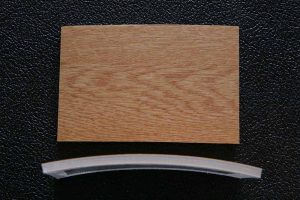
Once you make the decision to use Marley or vinyl dance flooring you may need samples and estimates for the full cost of the flooring. To get an accurate price estimate, measure the space by width and length. Do not provide the approximate square footage. Square footage does not provide the information needed to properly cut the floor.
Marley dance flooring comes in different widths. Therefore, it is not cut by width. Instead, it should be cut to the length of the room.
Installation
Before you roll out your Marley dance floor, make sure the floor it is going on is clean (The floor that the Marley is put on is called the sub-floor). Do not allow any scattered pieces of waste such as dust, dirt or sheet rock sanding to be left on the floor (Note: Sheet rock sanding is most often seen in new buildings). If any type of debris is left on the sub floor and not cleaned up, it will telegraph through the vinyl dance surface. This makes it look bumpy and causes a hazardous surface.
If the sub-floor is wood, make sure any cracks, holes, or nail marks in the sub-floor are filled with an appropriate filler and then sanded smooth.
The optimal sub-floor that Marley should be installed on is a wood sprung dance floor. If you are using the floor for multi-purposes, i.e. you’ll be using the Marley floor only part of the time, then you’ll want to have a finished hard wood sub-floor. If you are permanently installing your Marley floor then you can go with an unfinished hard wood sub-floor (this will save you costs on the flooring as well).
How the dance vinyl flooring is installed will depend on whether it will be a permanent or semi-permanent installation.
A permanent installation of the Marley dance floor means it is glued down to the Sprung Sub-floor. Then the seams are heat welded together. If you choose a permanent vinyl flooring installation, glue and heat welding rods should be purchased with the same company for the best results. You can check out Dance Equipment’s glue and welding rods here.
For semi-permanent installation, the seams and outside edges of the Marley floor are “top taped” down to cover the seams and open outside edges with a vinyl floor tape. An alternative to top tape is double faced adhesive tape. It is used to tape the bottom side of the Marley vinyl flooring to the Sprung Sub-floor. When using double faced tape you lose the ability to easily move the Marley vinyl flooring.
Most people try to put pieces of Marley floor as close together as possible when they roll it out. DO NOT DO THIS. Doing so does not allow for contraction or expansion.
Putting rolls together to tightly can cause a ridge down the seams or air bubbles under the flooring. When installing the floor leave about 1/16″ between rolls (approximately the width of a dime standing on edge). Let the Marley vinyl dance floor surface sit for 24 to 48 hours to acclimate and then apply top tape.
Summary Installation Notes For Marley Flooring
Below is a step-by-step installation checklist:
- After you receive your Marley dance floor, immediately inspect the boxes and rolls to see if there is any damage. Once you determine there is no damage to the flooring, allow it to acclimate to room temperature for at least 24 hours.
- If you need to cut the Marley floor, use a sharp utility knife and a hard straight edge for making cuts.
- Lay our each Marley panel and leave space between each panel. The space should be about the width of a dime standing on its edge or 1/16th of an inch.
- Leave a little space around perimeter if you are taping perimeter edges
- After the floor is rolled out let acclimate again for another 24 to 48 hours.
- Tape the seams and perimeter. This includes taping the floor at all doorways and openings to the dance floor.
Cleaning & Maintaining Your Marley Dance Floor
Regular maintenance includes sweeping, using a dust mop, and using a vacuum cleaner. Depending on the traffic of the facilities this can be done daily, 2-3 times a week, or once a week.
Regular cleaning maintenance will increase the longevity of your Marley dance floor. Thus maximizing your investment. Cleaning the floor regularly is important because dust and dirt make the floor slippery. In addition, oils from bodies and sweat cannot always be seen on the Marley vinyl floor surfaces but are present. All floors should be cleaned at least weekly.
Below are instructions for cleaning your Marley dance floor. Dance Equipment International’s all purpose floor cleaner is made for Marley vinyl dance flooring. Never use wax, store bought vinyl wax cleaners, or any product that contains ammonia on the Marley dance surfaces.
- Before starting a “wet cleaning” you should make sure the floor has been swept, dust mopped, and/or vacuumed.
- If using Dance Equipment International’s recommended cleaning solution, mix 2oz. (1/4cup) of cleaning solution to 1 gallon of water.
- Use a mop that has been tightly wrung out. No rinsing is needed.
- For a stronger cleaning use 8oz. of cleaning solution to 1 gallon of water.
- Use a mop that has been tightly wrung out and clean vinyl flooring. Then light rinse with water.
- For Tough spots, stains, or tape residue, the cleaning solution can be used directly on the floor with a sponge or mop. Be sure to wear rubber gloves to avoid contact with skin. After scrubbing the floor, rinse the Marley vinyl dance flooring with clean water and let dry.
Storage Of Marley Flooring
Make sure you clean the Marley dance floor before you roll it up and store it. Also, make sure the surface is dry before rolling it up.
Most Marley flooring is delivered rolled onto a corrugated core that is very thick. Keep that corrugated core.
To store the vinyl flooring roll it up with the right side of the floor to the outside. Roll the Marley flooring on the cardboard core. Keep the roll very tight and even on the edges, i.e. do not allow the edges to get uneven. Once the floor is rolled up it can be secured by using floor tape around the roll or by using strips of velcro.
You should never store Marley floors standing up in a corner or laid on top of each. The vinyl flooring can collapse and form egg shape folds or develop a crease. You will most likely not be able to fix this if it were to happen and you may have to purchase a new Marley floor.
You can easily make your own storage shelving. At local hardware stores, such as home depot, you can buy shelving brackets that hold up wood shelving. Then you can attach them to the wood studs in your wall. Also, purchase PCV pipe 10-12 inches longer than the width of your Marley vinyl flooring roll.
Slide the PCV pipe through the middle of the cardboard core that you rolled up the Marley flooring on, and suspend them on the brackets. The extended edges on the PCV pipe also make it easier to carry the rolls of vinyl flooring to store and then to roll back out when ready for use.
If rolls are stored for a length of time you can wrap or cover the rolls with plastic or visqueen to keep dust and dirt off of the rolls.
About Us
Dance Equipment International wants to use our experience and knowledge in helping you make your decision for the proper Marley vinyl flooring choices. Dance Equipment International’s friendly knowledgeable sales consultants are ready to assist you with information, quotes, and technical support to make buying the right dance equipment easy and stress free. Increasing discounts are available for purchases of larger quantities.
Call us at 1-408-267-1446 or toll free at 1-800-626-9258.

